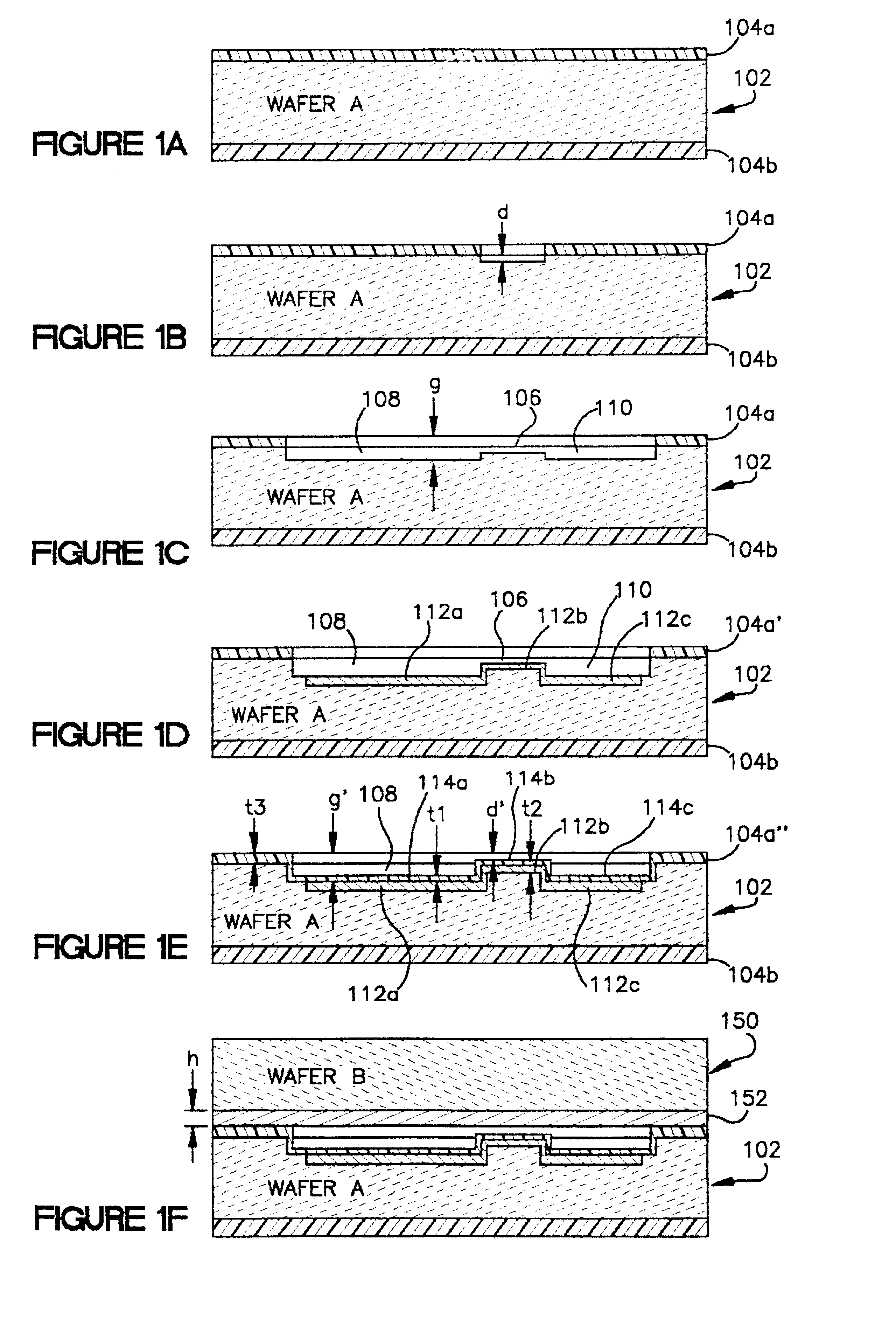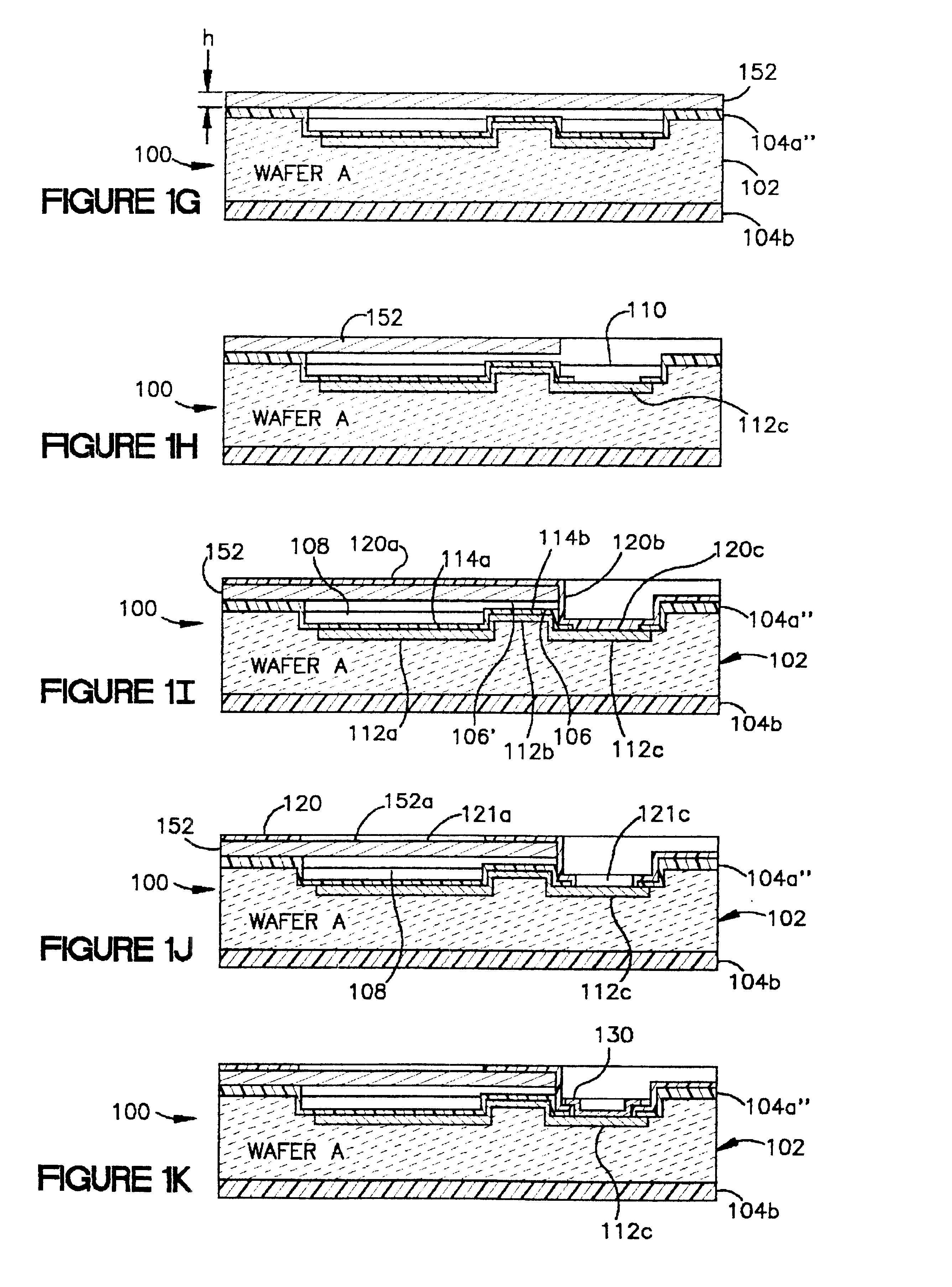Method of fabricating silicon capacitive sensor
a capacitive sensor and silicon technology, applied in the field of fabricating silicon capacitive sensors, can solve the problems of small environmentally-caused capacitance changes over time, small environmental impact changes, and insignificant changes, and achieve the effects of reducing the conductivity of the substrate 102, reducing the stray capacitance in the sfb tmcps, and minimizing the bonding area
- Summary
- Abstract
- Description
- Claims
- Application Information
AI Technical Summary
Benefits of technology
Problems solved by technology
Method used
Image
Examples
embodiment 100
Referring to the drawings, FIGS. 1A to 1K illustrate representative steps of a first preferred embodiment 100 of a structure and manufacturing process design for a touch mode capacitive pressure sensor (TMCPS) based on silicon fusion bonding (SFB) technology. The resulting sensor 100 embodiment can be seen in FIG. 1L, shown in a partially cutaway 3D view. Although these figures illustrate a single sensor at various stages in the process, it should be understood that these process steps are applied simultaneously to all the plurality of sensors, not shown, but contained within the bounds of the same wafer assembly which contains the illustrated sensor.
A first exemplary SFB TMCPS fabrication process, for fabricating a plurality of SFB TMCPS sensors according to the invention, includes the following process steps. Although the steps are numbered for convenient reference, it is within the scope of this invention to fabricate a sensor using some or all of these steps, and in any order. I...
first embodiment
Step 4. FIG. 2C illustrates the bonded assembly of the two wafers, wafer A (202) and wafer B (250). Before bonding, the top wafer B (250) must be prepared as in the first embodiment described hereinabove: a well-defined thickness "h" of heavily doped boron (using a diffusion process) creates a P+ silicon layer 252; the now-roughened surface of the P+ layer 252 is suitably polished using chemical-mechanical polishing (CMP); and then wafer B (250) is bonded to the substrate wafer A (202) using the silicon fusion bonding (SFB) technique, with the P+ silicon diaphragm layer 252 bonded to the insulating oxide layer 204a. No alignment is required during the bonding. The bonding is performed in a vacuum in order to provide a vacuum reference in the resulting hermetically sealed sensing cavity 208.
Step 5. FIG. 2D illustrates the wafer assembly 200 after dissolving away the unwanted portion of wafer B (250). After bonding in the previous step, the wafer assembly 200 is immersed in a dopant-d...
PUM
| Property | Measurement | Unit |
|---|---|---|
| temperature | aaaaa | aaaaa |
| particle size | aaaaa | aaaaa |
| particle size | aaaaa | aaaaa |
Abstract
Description
Claims
Application Information
 Login to View More
Login to View More - R&D
- Intellectual Property
- Life Sciences
- Materials
- Tech Scout
- Unparalleled Data Quality
- Higher Quality Content
- 60% Fewer Hallucinations
Browse by: Latest US Patents, China's latest patents, Technical Efficacy Thesaurus, Application Domain, Technology Topic, Popular Technical Reports.
© 2025 PatSnap. All rights reserved.Legal|Privacy policy|Modern Slavery Act Transparency Statement|Sitemap|About US| Contact US: help@patsnap.com



